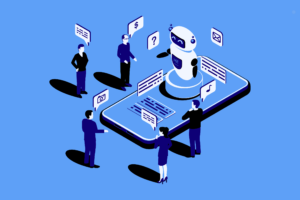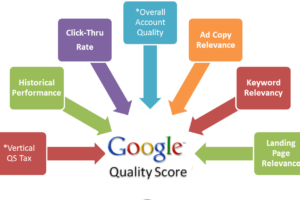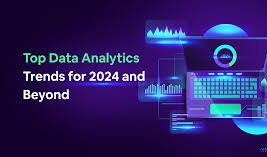The world is swimming in data. From every click on a website to the hum of a connected appliance, information is constantly being generated. But data is only as valuable as our ability to harness its power. This is where big data analytics comes in, acting as the key that unlocks the hidden insights waiting to be discovered.
As we hurtle through 2024, the landscape of big data analytics is constantly evolving. Let’s delve into the top trends that are poised to shape the future:
1. Democratization of Data: Putting the Power in Everyone’s Hands
Traditionally, big data analysis was the domain of data scientists – highly specialized individuals fluent in complex coding languages. However, the trend in 2024 is towards data democratization. This means making data analysis tools and insights accessible to a wider range of users within an organization, from marketing managers to sales representatives.
Imagine a world where business leaders can ask questions about their data directly, without relying on technical experts. This is the future that data democratization promises. User-friendly interfaces, powered by natural language processing (NLP), will allow users to interact with data using plain English. Additionally, self-service analytics platforms will empower individuals to explore data, generate reports, and identify trends without needing extensive coding knowledge.
The benefits of data democratization are numerous. It fosters a data-driven culture within organizations, where everyone can contribute to informed decision-making. It also reduces the bottleneck created by relying solely on data scientists, allowing for faster analysis and action.
2. Augmented Analytics: Supercharging Human Intelligence with AI
While data democratization empowers individuals, augmented analytics takes it a step further. This powerful trend leverages the capabilities of artificial intelligence (AI) and machine learning (ML) to augment human analysis.
Imagine an analyst sifting through a massive dataset. Augmented analytics tools can automate tedious tasks like data cleaning and anomaly detection. They can also use AI to identify hidden patterns and trends that a human might miss. Additionally, AI can generate insights and recommendations, prompting the analyst to explore new avenues.
This isn’t about replacing human analysts – it’s about supercharging their capabilities. By automating mundane tasks and providing intelligent guidance, AI frees analysts to focus on strategic thinking and complex problem-solving.
3. The Rise of Streaming Analytics: Real-Time Insights for Real-Time Decisions
The world is no longer static. Data is constantly being generated in real-time, from social media feeds to sensor readings in factories. This necessitates a shift towards streaming analytics, a technology designed to analyze data as it arrives, rather than in batches.
Think about a company monitoring social media sentiment towards a new product launch. Traditional analytics might provide insights a day later when the conversation has already moved on. Streaming analytics, however, can analyze social media data in real time, allowing the company to identify negative sentiment and address it immediately.
This real-time decision-making capability is transforming industries. In finance, streaming analytics can be used to detect fraudulent transactions as they occur. In healthcare, it can be used to monitor patient vitals and predict potential complications. The applications are vast and constantly evolving.
4. The Cloud Takes Center Stage: Scalability and Accessibility for All
The exponential growth of data is placing a strain on traditional on-premise data storage solutions. This is where cloud computing comes in, offering a scalable and cost-effective alternative.
By migrating their big data infrastructure to the cloud, organizations gain access to virtually limitless storage and processing power. This allows them to handle massive datasets without significant upfront investment. Additionally, cloud-based analytics tools offer greater flexibility and accessibility, allowing users to access data and insights from anywhere with an internet connection.
The cloud is not just about storage and processing; it’s also about fostering collaboration. Cloud-based platforms enable teams to work together on data analysis projects, regardless of location. This is particularly beneficial for geographically dispersed organizations.
5. Data Observability: Ensuring Trust and Transparency in Data-Driven Decisions
As organizations rely more heavily on data for decision-making, the need for data observability becomes paramount. Data observability is monitoring the health and quality of data throughout its lifecycle.
Imagine relying on data to make a critical business decision, only to discover later that the data was inaccurate or incomplete. Data observability helps to mitigate this risk by monitoring data pipelines for errors and inconsistencies.
Wrapping-Up
In conclusion, the future of big data analytics is bright and brimming with possibilities. From empowering everyone with data insights to harnessing the power of AI and real-time analysis, these trends hold tremendous potential for organizations across industries. By embracing these trends, businesses can unlock the hidden value within their data, confidently make data-driven decisions, and gain a competitive edge in the ever-evolving landscape.











